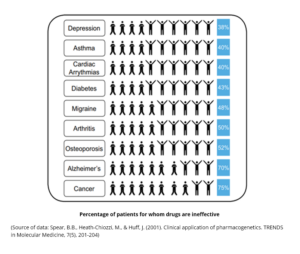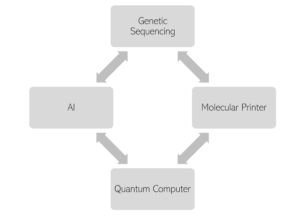What If We Could Prevent Another Damaging Pandemic Together?
Speed. It is the deciding factor between hundreds or millions of death cases. In a pandemic, speed is everything. The World Health Organization’s (WHO) emergencies program executive director Michael Ryan, a doctor experienced in the Ebola outbreak, rightly said in a COVID-19 press conference that speed trumps everything else in an emergency response. Speed defines life or death. Governments, people, and especially the pharmaceutical sectors must embrace the speed to conquer a pandemic. Countries that are slower to respond are paying a huge price. Speed is everything that includes the pharmaceutical industry as well. What if we could make the vaccine available to the majority within one month instead of 18 months?
Unfortunately, this pandemic will not be the last one and strict lockdown to prevent the spread of the virus is not a long-term solution because it has dire consequences to our economy, society, or even to the lives of our loved ones. The long-term answer lies in the pharmaceutical industry’s ability and speed to research, develop, execute clinical trials, and manufacture the cure. The good news is that the pharmaceutical industry’s speed today is unprecedented. It usually takes 10-20 years to bring a medicine to the market, and we already started producing the cure within 12 months. It is possible today because of the advancement in biotechnology. Twenty years ago, it took more than ten years to sequence DNA, or to be more exact, the whole human genome. Today, the latest DNA sequencing technology can do it in a matter of hours. The covid-19 sequence was available from the very beginning of the pandemic. Besides, mRNA technology enables the incredible speed of just 42 days from vaccine R&D to human trials. In short, the pharma industry has been moving faster than ever before. Unfortunately, it is not fast enough because almost 2.5 million people have passed away worldwide due to Covid-19 (15th February 2021). We at GxP-CC have lost our loved ones due to Covid-19 as well.
What if we could make the vaccine available within one month instead of 18 months to the majority?
If we could stop a pandemic within one month, it would be significantly less pain, both in lives and livelihoods. Currently, one of the factors that takes many years is the R&D process. The pharmaceutical industry has one of the highest R&D intensity among other sectors. However, the R&D efficiency of the pharmaceutical industry is declining every year by comparing the amount invested and patents activity. One of the phases that takes a long time is the clinical trial phase. This phase is for the good of the public. The whole purpose of clinical trials is to ensure the patient’s safety and efficacy. Clinical trials are broken down into a few phases, and they are costly and risky. Nature Biotech did a study that only 1 out of 10 drugs (stage I to launch) made it to the market, and it could easily cost more than 1 billion dollars just for the clinical trials.
Even with so much money and time involved, clinical trials are not a panacea. Clinical trials have a one-size-fits-all approach where testing is done on a diverse sample of people, assuming that it will work on any individual if it works on them. However, that assumption is inaccurate. If we look at the diagram above, even after going through many years and billions of dollars, the percentage of an ineffective drug for patients can be up to 75%. In short, clinical trials are expensive, time-consuming, and flawed.
Another factor that takes many years to complete is the manufacturing process. Traditionally, pharmaceutical companies will only start building factories for the medicine after receiving drug approval. It makes sense as no one wants to build an expensive factory for a failed drug. The delay contributes to additional years of the manufacturing process, which prolongs the time to bring the drug to the market.
How could we possibly produce a safe, precise, and effective drug in a short time?
On one side, regulators are trying all they can to protect public safety with stringent processes. On the other sides, these processes are deadly, especially in a pandemic. We could do better by making safe and effective drugs available in a much shorter period.
Next-Generation Medicine
By harnessing the full potential of these four components, it is possible to produce precise, effective, and safe medication within a short time:
Genetic Sequencing: Genetic information plays a vital role in how an individual reacts to a particular medication. The first human genome was successfully sequenced in 2003, took 13 years, and cost 3 billion dollars. Today, Next Generation Sequencing (NGS) takes only a few hours to sequence the whole human genome and costs less than $1000. Previously, we did not have a reason for the government or healthcare to pay for genetic sequencing. With this ongoing pandemic and the need for a much quicker solution, the benefits of having genome sequencing for everyone outweigh the costs enormously. On the other side of regulators, FDA also recognizes the benefits of genetic sequencing and published this guidance in 2018.
Quantum Computing: a quantum computer is a computer with very high-performance capability, which is very useful for simulating molecular dynamics and accelerating drug development. A good example of quantum computing usage in the pharmaceutical industry is Roche’s partnership with the U.K.’s Cambridge Quantum Computing to tap the potential of discovering new medicine for Alzheimer’s disease. Besides, a consortium called QuPharm was established end of 2019 by 17 different pharmaceutical company representatives such as GSK, Takeda, Pfizer, Merck, and AbbVie to pool expertise and share the rewards of quantum computing in drug discovery. Another example is the partnership between Boehringer Ingelheim and Google. The partnership was announced in January 2021 to contribute to the design and development of new medicines by harnessing the power of quantum computing. Previously, supercomputer such as Sierra was used for this very purpose to speed up drug discovery for cancer and precision medication. However, supercomputers are much slower than quantum computers, where quantum computers would take seconds to calculate a problem that would take days for supercomputers.
Artificial Intelligence: This topic might still be a scary topic for many people, mainly because Hollywood loves to portray AI as the villain. However, it does not have to be this way, and we are missing out on AI’s potential if we do not give it a try. First, AI is useless for a simple problem. For example, if the problem is small and straightforward, we could plot a graph and find a solution without AI. However, if we are talking about a large, complex, multi-dimensional problem, AI could analyze the correlation. Second, AI can be taught through supervised learning by feeding predefined, useful information to the machine. In this case, AI is beneficial in analyzing the complex correlation of patients’ data between their ages, medical histories, health status, test results, medical images, DNA sequences, and many other health information sources.
Molecular Printer: a molecular printer is a 3D printer capable of printing chemical substances on the molecular level. In layman’s terms, a machine that can produce medicines at home. We no longer need to wait for years for factories to build and manufacture the drugs required. It could be done at the local pharmacy or home. It might sound like science fiction, but this fiction has become a reality in the last few years.
Interestingly, all these components already exist. If we could make all these components work together, we are not far from the next-gen medicine, thus avoiding another damaging pandemic. Seventy years ago, Alan Turing talked about a machine that could think, i.e., artificial intelligence, when modern computer barely exists. Some thought he was crazy, but today, he is widely recognized as the father of theoretical computer science and artificial intelligence for the significant contribution he made for us. As Alan Turing contributed to the technology today, we could also contribute to a better future tomorrow.
If you or your team are working on this solution, we at GxP-CC would like to team up with you in building a better future together. We have been working together with pharmaceutical companies worldwide for the last 25 years, successfully supporting the pharmaceutical industry to navigate through compliance challenges. Together, we could achieve the impossible, making the future of medication better for all of us.

